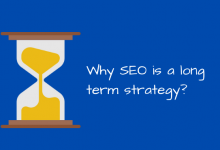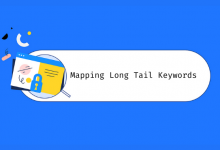Local SEO for Businesses to Rank in Multiple Cities?

If you have a company with multiple locations, you would of course also want to see it in Google’s local search results. But then you first have to tell Google that your companies are located in multiple locations, but how do you do that in Local SEO Ranking?
As in the other areas, Google tends to regularly adjust the rules of the game and sometimes you cannot do without the help of a developer to fully achieve the optimization of local findability. But with this guide, you can determine which steps to take and at the same time see which steps you may have missed in your current online marketing strategy.
Table of Content
What is Multiple Location SEO?
SEO for multiple locations focuses on the search engine optimization of companies with multiple physical locations (shops, offices), each of which wants to be found separately in the local search results. The search engine, such as Google, tries to match the search function to the searcher. When a potential customer is looking for a particular brand, type of store, or business, Google will try to show the closest thing to you. For example “plumber”, snack bar, or Nikes.
Also consider the increasingly popular “Voice search” trend, where the visitor will probably ask something like: “Find a hairdresser near me”. Where the result yields a map or directions to the nearest hairdresser.
How can you make it clear to Google that you are? In the example below, at least three hairdressers are missing, who are closer in the area.
With multi-site SEO, you can ensure that Google shows just the right thing to the searcher near you.
Do not think that it is not important to you, because this strategy works from 5-5000 locations and even 50,000. Even large companies such as Albert Heijn and Gamma use it, so read on.
Site structure
Just like with any other website, the structure is super important to be found well. The URL structure in particular is something you should keep an eye on. This is the key to being found successfully with Google or the first thing that goes wrong.
Rule 1: NEVER put all your locations on one page (the index aside). Readers will find it difficult and frustrating and Google doesn’t get it.
The best solution is your own page (or several) for each individual location. This way you can also immediately state the details and offers per location.
For instance:
outreachway.com/plaats >>> Here is the list of all your stores
outreachway.com/plaats/amersfoort >>> an individual page for the shop in Amersfoort
outreachway.com/plaats/amersfoort/rout Description >>> how to get there
outreachway.com/plaats/amersfoort/offers >>> special offers
You can see that the structure is very simple and clear, easy for the users, and easy to reproduce for the store.
If you are internationally oriented or perhaps also multilocal, you can also omit the index and use a search field where the user is directly linked to the place in question. Still, I would like to recommend the following structure:
outreachway.com/werelddeel/land >>> if necessary, here the index with countries
outreachway.com/werelddeel/land/plaatsname >>> here the individual page of the relevant business or shop.
It is important not to create a separate domain or subdomain for each city where your company is located. Often a land-based approach is the most ideal, but a centralized approach is still preferred from an SEO point of view.
If you set up the website in a decentralized way, you would have problems with the link structure and domain authority, because the different places would in fact compete with each other. Both must be centrally located and the foundation of your trademark to ensure growth and enduring authority.
Location page structure
Read this section carefully as this is what multi-location SEO is all about.
Every page has the same type of information and structure, but the content is still unique. For example, think of:
- Complete name and address details and telephone number. Obviously in the correct format as requested by Google
- Location-specific content, and of course, the more the better. Reviews, photos, opening hours, offers, accessibility, etc.
- Complete route descriptions for car, bicycle, and public transport
- Something specific about the place, even just a few sentences, makes the text even more unique
- Unique location-focused Meta Tags (titles and description). These appear in the search results and this is what the searcher will see or hear.
- Use super beautiful images, videos are also allowed.
If you stick to the above, you already have a considerable lead over the competition in 95% of the cases. Most will use the same text and content on every page and, for example, only adjust the opening hours.
The users love information, but often do not know how to find it, so formatting is important: put the information where it is clearly visible, use clear headings (use layout and not just H1 headings all over the webshop: you can only use H1 once per page!).
It is also important to take into account the growing voice search trend, so write very naturally. Nobody talks without pausing to breathe. Keep your information simple, short and to the point and remember you want Google to be able to easily fish the information out of your text.
Use microformats! Together with structured data, these are super important for the findability of your website. Use schema.org to apply LocalBusiness Structured Data (or other). This makes it much easier for search engines to find desired and relevant information on your city page. Information presented directly to the viewfinder. With this you can potentially increase your rank position and voice searchability.
Useful SEO tips
The above may give you the jitters to get started right away, but before you do, a warning is in order.
- Don’t create thousands of location pages where you don’t work at all. Only create pages where you can actually state an address.
- Do not create different pages for one location that will then fill you with search terms (eg SEO Vlaardingen / SEO in Vlaardingen / Best SEO of Vlaardingen ………). Just create one beautiful page for each location and let the content speak for itself. If you create multiple pages for the same locations, you automatically reduce your ranking.
Optimize Google my business
If you want your business to be easy to find, make sure the search engines know who owns a particular location or trademark. You do this by claiming these places as the owner with Google my business . Bing places is also something to keep an eye on, but unfortunately not yet active in the Netherlands.
Both work in much the same way and have the advantage that they have links to other sites and thus make your company known in the mobile world. This means that just about everyone who has a mobile phone can access this way of searching and thus potentially find your company as a result of a search. It is therefore important to have your locations on these platforms in order, with this you can make or break a purchase.
How do you do that?
- Make sure all information is correct, legible and without spelling errors. Fill in all fields as much as possible. Also make sure that your name and address details are provided in the correct BING or Google format.
- Link directly to your local page
- Upload photos of your company regularly, preferably videos as well
- Ask customers for reviews on Google my company (how with reviews the earlier Google my company appears in the search results)
- Turn on Google my business messaging so that customers can contact you
- NEVER neglect your presence on Google my company or Bing places, and update regularly (if you have a lot of changes, do it on a fixed day of the week).
Handy SEO tip
Verify your local businesses and check regularly if your business listing is still active. If you are unexpectedly disabled, claim your business again. Unverified companies rarely appear in the search results (non branded), so don’t forget the verification. This will enlarge the results to appear in the local search results .
Provide local references
Local references include links and quotes from large-scale directory-type websites that offer guides or references for your type of products or services (type of home pages). Think for example of Yelp or Trip Advisor, but there are also special pages that are industry-linked and that can provide links, as well as local news sites.
When you make sure that your local pages are referred to, you simultaneously show Google where the most important page of your website is for this city or region.
Such a referral page regularly appears directly in the search results, for certain types of searches. For example, when you search for “contractors in Amersfoort”, or “local bakers”, or “copywriters in Rotterdam”, a website will most likely be shown with references. Each result shows a company with a possible link back to that company’s website.
Like Google my business, you can easily set up referral optimization yourself:
- Make sure that all information is correct
- Link to your local page only
- Upload photos and videos regularly
- Request reviews
- Update your profile regularly to increase your ranking in the database
Provide local content
On-page
This step is more common for companies with only one physical location than it is for multi-location SEO. Nevertheless, it is important to show something specifically for each location where possible, so that it fits in with the expectations of the visitor. Especially if it is a landing page or the visitor quickly ends up on the local page in some other way.
All information must therefore correspond to that specific location. Offers, blogs, etc. should all relate to the particular location that the page is redirecting to. It is recommended to write blogs etc. especially for that location, in order to improve the local SEO.
Off-page/link building
As with any website, links to your website can help improve your ranking position. This is no different for local SEO. In fact, you can see faster and clearer results with local SEO than with link building based on more general terms. This is because competition on local pages is often (but not always) less fierce.
For resources, look to industry-related websites, blogs, and people with many followers (influencers) in your field. Also, good places to get links from are the local online news and events platforms. Make sure that the links point directly to the local pages to have a positive effect on your ranking position.
Conclusion
Multi-location SEO is not easy. If you have several places where you are acting as an entrepreneur, it is important to take this into account when completing your website. Of course, you have a keen eye on the interests of the visitor because they must be able to easily find the required local information. If you are active in many different places, it is important to ensure a consistent approach that will take some time but will certainly yield results. At the local level, competition is usually (still) less fierce and it is easier to appear at the top of the local search results.
Also Read: SEO for online shops: you should know that









